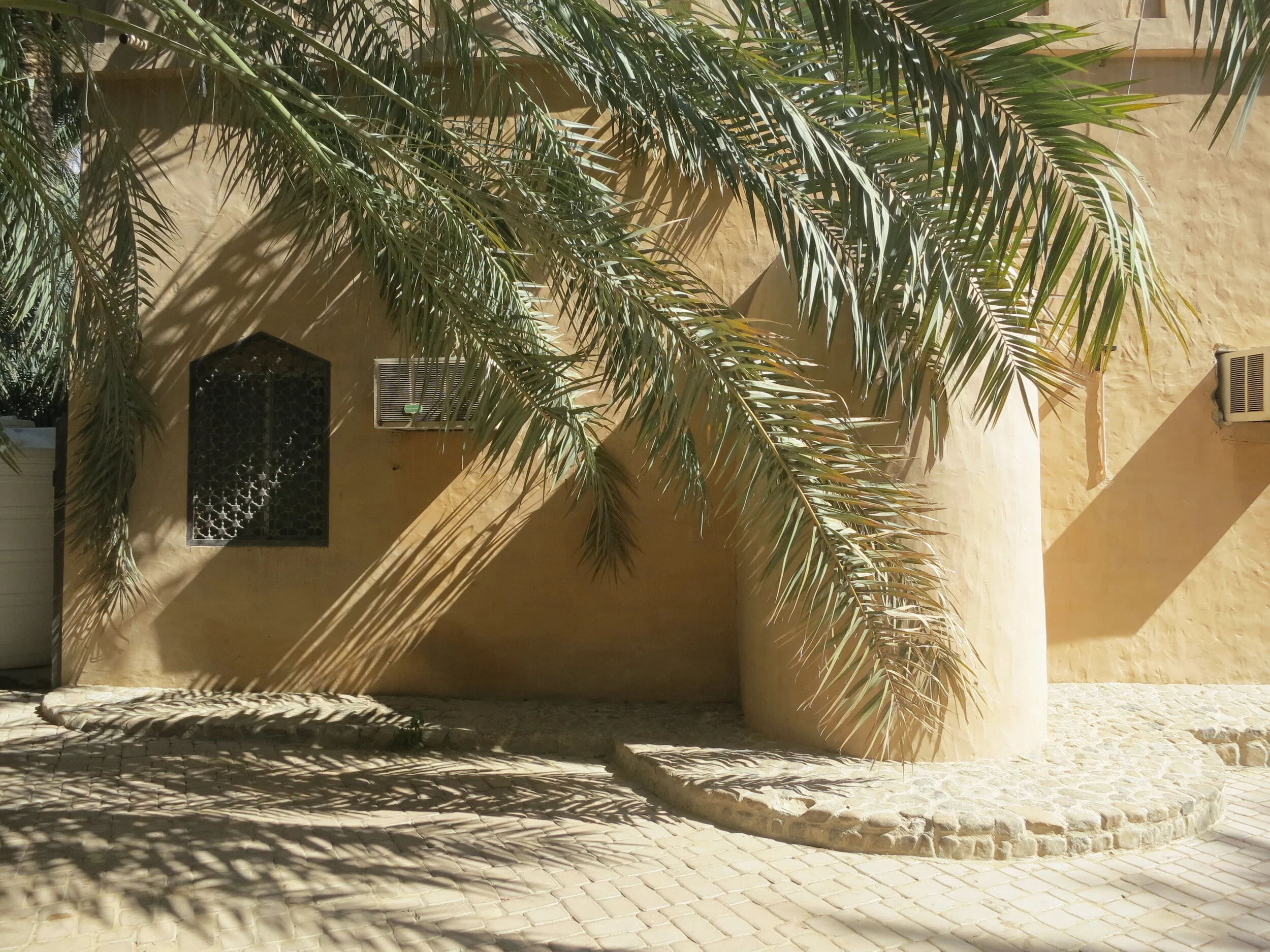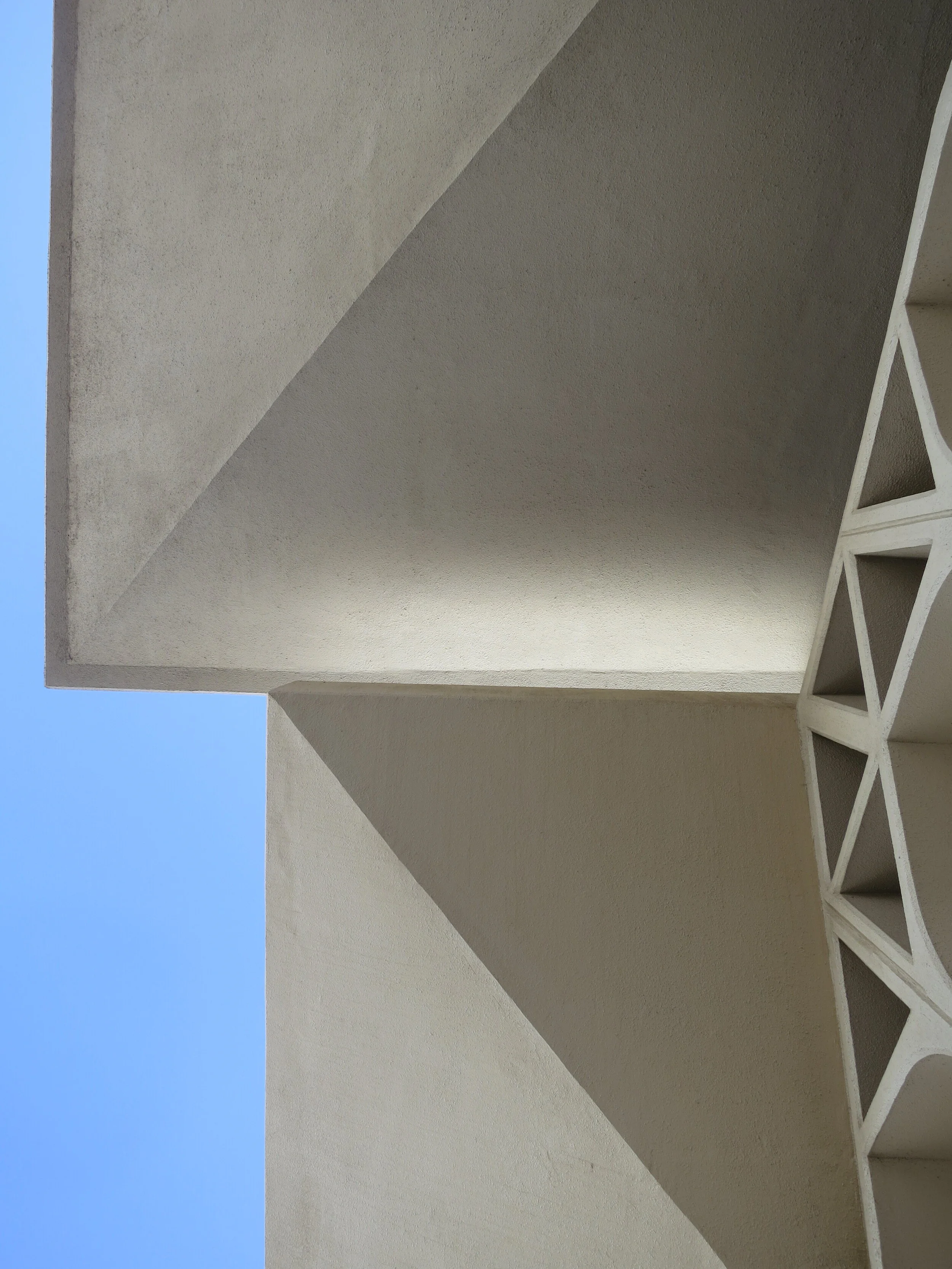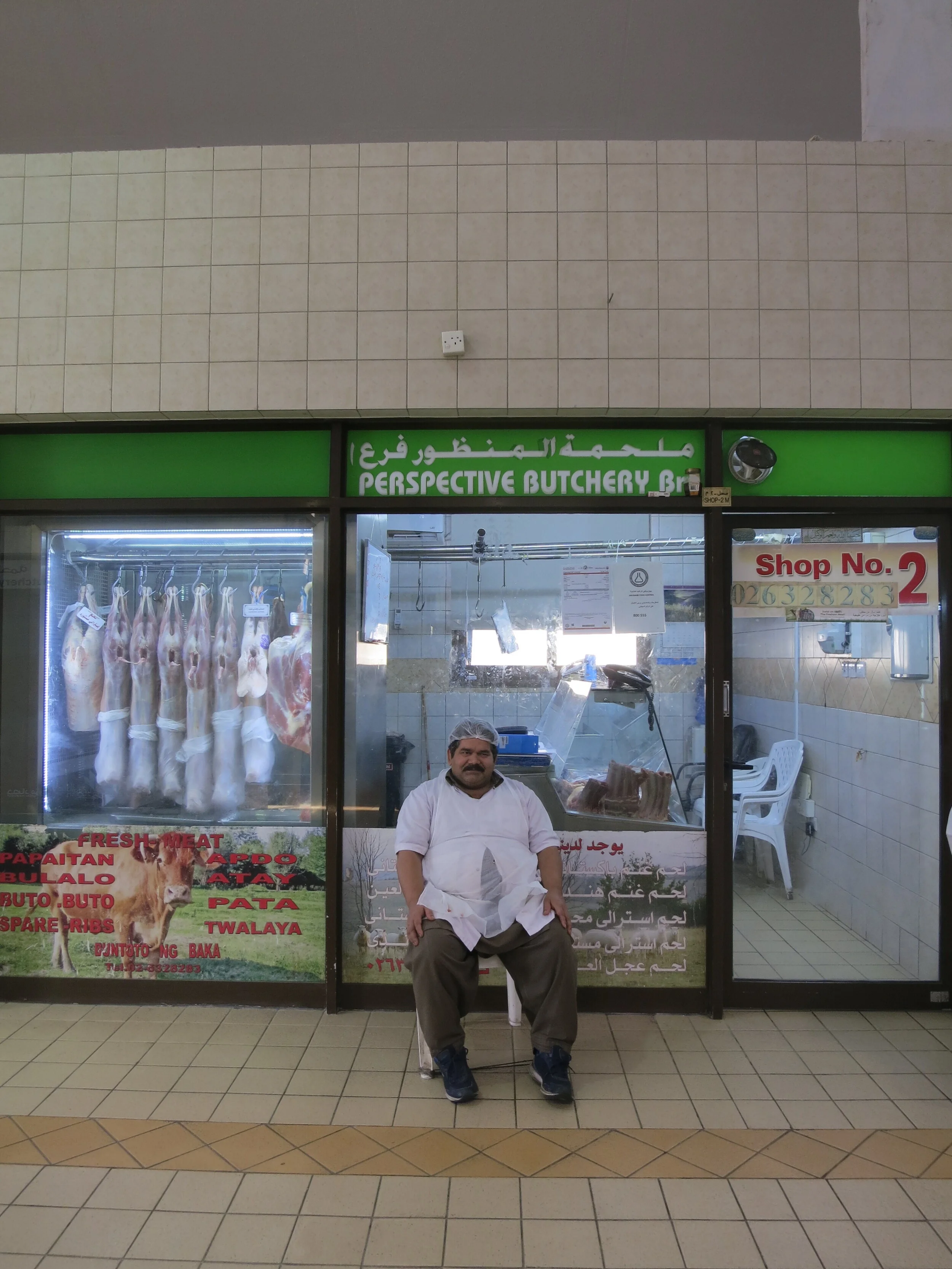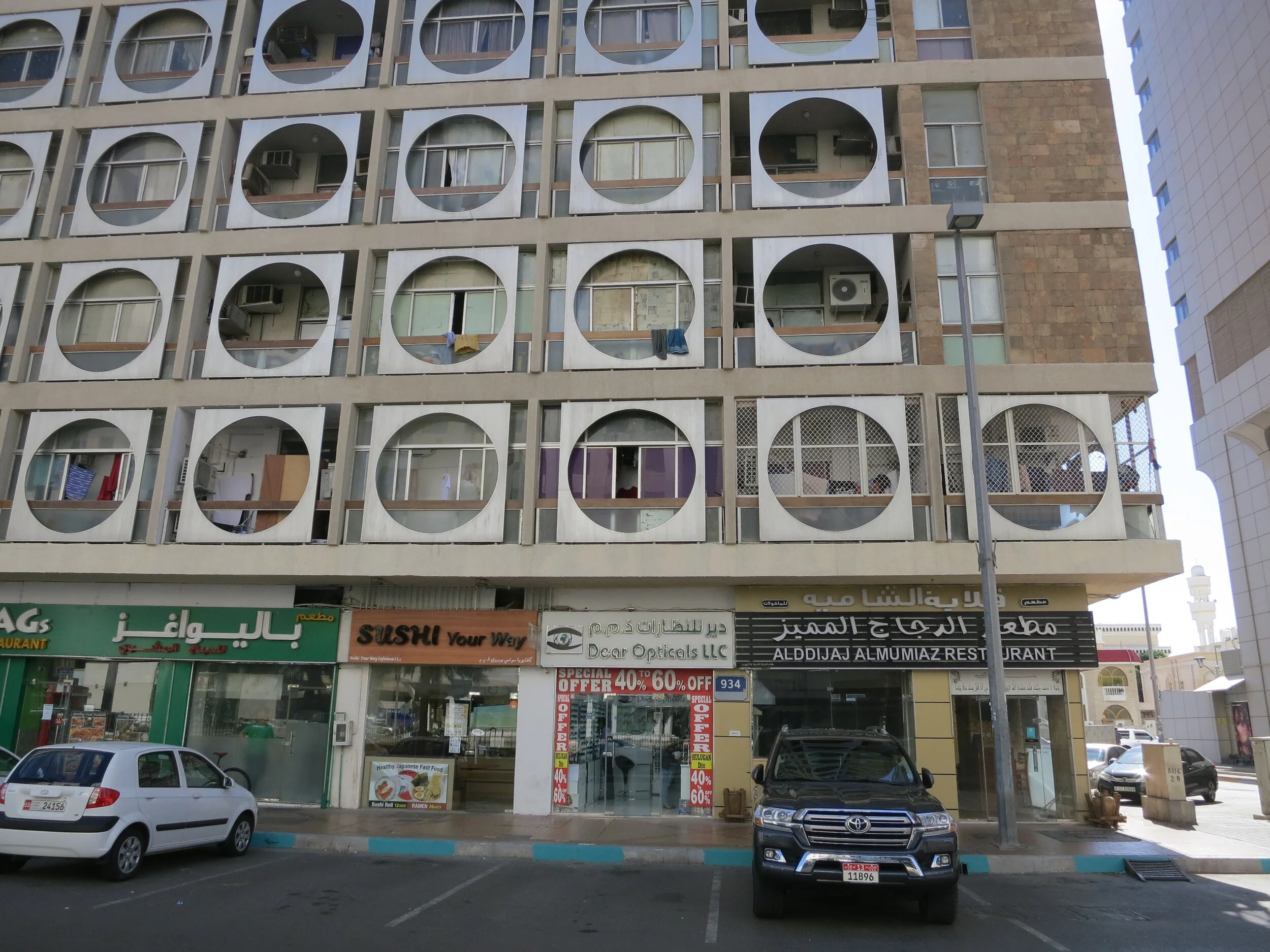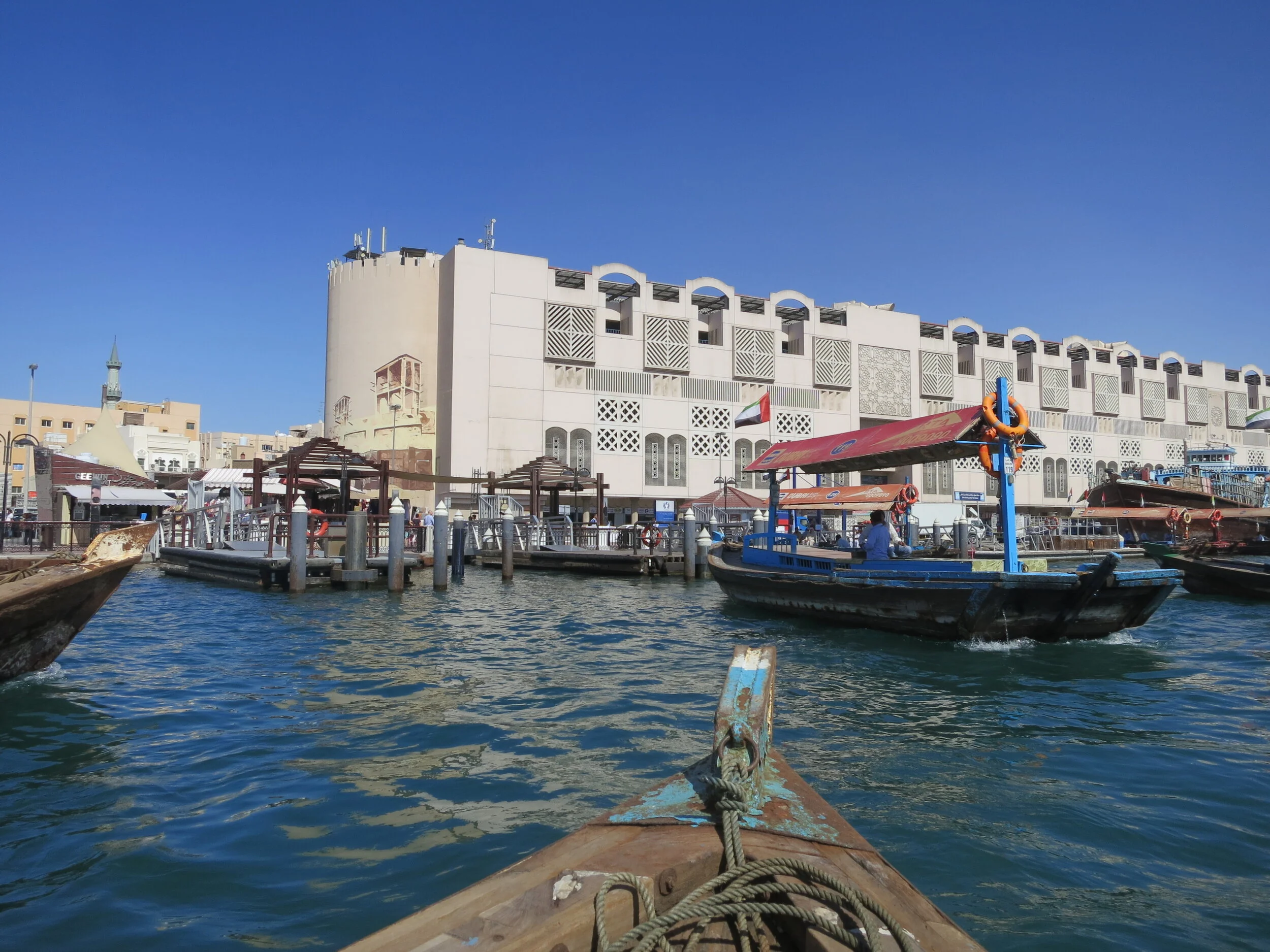Building Identity
Modern Architectural Heritage of the Emirates
Locals paused their daily routine to watch as the members of the UAE Architectural Delegation attempted to capture the perfect photograph of the Fish and Vegetable Market near the Madinat Zayed Shopping Centre in Abu Dhabi. Two onlookers glanced back and forth between my camera and up at the mushroom arabesque concrete structure, shaking their heads with amusement. As an outsider walking down the streets of Abu Dhabi, Sharjah, and Dubai, I was taken aback by the concentration of buildings that are recognizably modernist. The style emerged in the early twentieth century as the reigning international philosophy of architecture and design in response to the large-scale technological and social change that came with a rapidly industrializing society. Modernism had a late manifestation in the UAE, instigated by the construction boom that followed the discovery of oil in the early 1960s. Amongst the distinctly modernist structures in the country, there is a subset of buildings which incorporate Arab and Islamic influences into their façades, a technique that is at odds with the core modernist principle to reject ornamentation. These buildings have been widely overlooked and undervalued, but there is a growing movement to acknowledge and document them as part of a larger mission to expand the definition of heritage in the UAE.
The ubiquity of modernist architecture across the world is inherent to the style. The mostly concrete, steel, and glass buildings are distinguished by their clean lines and lack of referential ornament. The Fish and Vegetable Market is clearly modernist, apart from the pointed arches that run down the façade. This detail is the result of a decree issued by Sheikh Zayed bin Sultan Al Nahyan, the country’s founder and first President in 1985, which dictated that no building permits would be granted unless the design could be related to the heritage of the region. The mandate, formalized in varying degrees within each municipality, was an attempt to preserve local identity amidst a universal international style. As architects began to design explicitly within these parameters, the most commonly represented features were arches, domes, and vaults, but in some cases, Arabic scripts were also incorporated into façade designs. Many researchers view the results of these codes as overly superficial and more broadly Arab than local. For these reasons the architecture of this period hasn’t been broadly appreciated, much less considered worthy of preservation. Although there is validity to these deeply studied critiques, ongoing research efforts strive to catalog the full fabric of the built environment that will allow a new generation to consider and value the impact of every stage of UAE modernism.
Countless buildings have been lost and others remain at risk as much of the architecture of 1960s, 1970s, and 1980s still remains undervalued. The rising initiative by scholars and activists attempts to document the far too many nameless buildings built by unidentified architects before they are eradicated through the cycle of construction and demolition that characterized the decades of post-oil economic growth. The National Pavilion of the UAE at the 14th International Architecture exhibition in La Biennale di Venezia in 2014 was dedicated to the modern architectural heritage of the country. The installation, Lest We Forget: Structures of Memory in the United Arab Emirates, presented a piece of a larger archival initiative. Architect Adina Hempel led the research on the curatorial team and continues to push the project forward as an Associate Professor at the College of Arts and Creative Enterprises at the Zayed University in Dubai. Hempel’s efforts are reflected and supported by the work of researchers across the country, such as Reem Khorsid, who is taking on the architecture and urban development of Sharjah as the lead researcher of the upcoming book, Building Sharjah.
As Hempel and Khorshid guided my cohort on walking tours through Dubai and Sharjah, respectively, they highlighted the country’s rich modernist architectural history. The discourse around whether these buildings are considered historic landmarks is polarized, mostly because the conventional definition of architectural heritage tends to be limited to structures recognized for their outstanding historical significance, often the degree to which they embody the vernacular of a region. For the UAE, this brings to mind the winding streets of Old Town Dubai and the more ancient, commanding, stone-construction forts that still stand in each emirate. Many of the strongholds, such as Qasr Al Hosn (1795) in Abu Dhabi, Al Hisn (1820) in Sharjah, and Al Fahidi (1787) in Dubai, now function as museums, further memorializing the long history of the region that they personify. These structures stand in contrast to the cities around them that rose from deserts at record speeds, making pre-oil architecture a clearly defined category that can be looked to as distinctly Emirati, and therefore readily accepted as worthy of preservation.
Defining the limits of historical significance and preservation is complex, but the influence of collective memory and nostalgia transcends monuments and museums. Urban planner Sultan Al Ramahi was asked by the Abu Dhabi Urban Planning Council to construct a series of illustrations that could collectively begin to represent the architectural identity of the city. Alongside his documentation of the lauded mint-green Central Bus Terminal and the Fish and Vegetable Market are drawings of what he describes as unnamed and unloved buildings in various states of disrepair. Al Ramahi also documented a pineapple-shaped playground slide and a volcano fountain, the latter of which was demolished in 2004. He doesn’t necessarily advocate for saving the pineapple, but in equating structures that evoke nostalgia with acknowledged landmarks, he prompts the question: who defines heritage and what should determine the limits of preservation? The complex urban landscape not only layers a memorialization of the past with a visionary future, but it also holds decades of structures that remain markers of the country’s historic development and continue to shape the legacy of the region. Heritage is evolving and expanding on the streets of the UAE.
Essay and photographs by Ashley Mendelsohn
